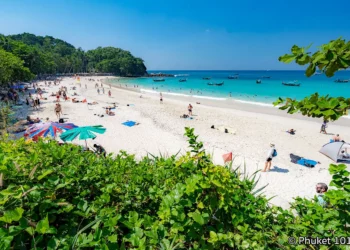Baba Taraknath Temple dedicated to Lord Shiva, worshipped as Taraknath, the Lord of the Stars., is a major pilgrimage site located on the banks of the Hooghly River in Tarakeswar, Hooghly, West Bengal. Baba Taraknath also known as Baba Tarakeshwar or Baba Tarakeshwarnath was built in 1729 by Raja Bharamalla, and is a sacred site believed to house a swayambhu linga, a self-manifested form of Shiva. It is also considered one of the sacred 64 Jyotirlinga as mentioned in Shiv Purana.
History of Baba Taraknath Temple
Baba Taraknath Temple, dating to the 18th century, was built by Raja Bharamalla in 1729 around a swayambhu linga found in Tarakeswar’s jungles. The linga’s discovery followed a dream to Vishnu Das, a devotee from Ayodhya, whose brother found cows pouring milk at a forest spot, revealing the linga. The temple, rebuilt in its current form, grew as a Shiva worship center. A stone slab credits Bharamalla’s work, including a nearby ghat. It pulls thousands daily, holding a big place in Bengal’s divine land.
Legend of Baba Taraknath Temple
Puranic tales say Taraknath is Shiva’s fierce form, who drank venom during Samudra Manthan, husband to Goddess Tara of Tarapith. The temple’s swayambhu linga was revealed when Vishnu Das, after moving to Tarakeswar, faced local distrust. To prove his faith, he held a hot iron, unharmed. His brother later found the linga where cows gave milk daily, guided by Shiva’s dream. Devotees believe Taraknath grants health, wealth, and moksha, as local stories and temple texts tell.
Architecture of Baba Taraknath Temple
Covering 2 acres by the Hooghly, Baba Taraknath Temple uses Bengal’s atchala style with four curved roofs and a natmandir in front, made of red brick and plaster. The main shrine, 10 meters by 10 meters, holds the swayambhu linga. Nearby are Kali and Lakshmi Narayan shrines, each 4 meters by 4 meters. A 50-meter ghat meets the river. The entry, a 5-meter arch with floral carvings, opens to a tiled yard, 1500 square meters, for thousands.
Sculptures and Carvings
The temple’s heart is the swayambhu Shiva linga, 2 feet tall, black stone, covered in silver and white cloth, with a cut for devotees to touch during puja. Smaller shrines hold a 3-foot Kali idol, black stone, and a 2.5-foot Lakshmi Narayan idol, white stone. The Kali shrine, 100 meters off, has clay panels, 0.8 meters by 0.5 meters, showing Shiva’s life, painted red.
Rituals and Worship
Worship starts at 5:00 AM with priests offering water, bilva leaves, and incense. At noon, rice, dal, vegetables, and sweets like laddus are offered. Big pujas happen at Maha Shivratri, Gajan, and Shravan Mondays, with night yagnas and Rudrabhishek. On Purnima and Amavasya, the linga gets Rajbesh adornment. People offer liquor as prasad, unique to Taraknath, and take bhog. The Gajan festival during April celebrates folk dances and processions since Bharamalla’s time.
Travel Information
Getting to Baba Taraknath Temple
In Tarakeswar, 60 km from Kolkata, the temple is reached by train, bus, or taxi, by the Hooghly River.
By Air: Kolkata’s airport, 70 km away, joins Delhi (2 hours), Mumbai (2.5 hours), Chennai (2.5 hours). Taxis take 2 hours, ₹1500–3000.
By Train: Tarakeswar Station, 1 km away, links to Howrah (1.5 hours, ₹20–80). Autos or rickshaws take 5 minutes, ₹20–50.
By Road: Tarakeswar joins Kolkata (60 km, 2 hours), Chinsurah (20 km, 40 minutes), Howrah (50 km, 1.5 hours) on NH-12. Buses cost ₹30–100; taxis cost ₹1000–2000.
Hours and Entry
Open daily, 5:00 AM–12:00 PM, 4:00 PM–9:00 PM. Free entry; puja costs ₹100–1000. No phones or cameras inside; lockers at temple counters. Stalls sell puja items nearby. Men must be shirtless while women wear sarees or suits, covering shoulders and knees. In fact, the priests at the temple entrance shouts “ছেলেরা পুরো খালি গায়ে, জামা গেঞ্জি সব খুলে ঢুকবেন” which roughly translates to “Men should be completely bare chested, remove all your shirts and vests before entry”.
Best Time to Visit
October to March, 12–25°C, is good for visits. Maha Shivratri (February–March), Gajan (April), and Shravan (July–August) bring crowds so better to go at dawn. Skip April–June, 25–40°C, for less heat and fewer people.
Nearby Places
Dudhpukur Tank, 100 meters, sacred pond for ritual dips.
Hanseswari Temple, 20 km, 1799 Devi shrine with terracotta art.
Bandel Church, 22 km, 1599 Basilica of the Holy Rosary.
Chandannagar Museum, 25 km, old museum of colonial history.
Antpur Radha Govind Ji Temple, 15 km, 1786 terracotta Krishna shrine.
Cultural Significance
Baba Taraknath Temple shows Bengal’s Shiva devotion and folk roots. The Gajan festival, with songs and dances, keeps old traditions functioning and alive. Priests and locals unite for festivals, building unity while nearby stalls sell Bengali sweets like sandesh and fish curry, adding to the visit.
Final Thoughts
Baba Taraknath Temple in Tarakeswar, Hooghly, West Bengal, provides a unique experience for the visitors making them feel Lord Taraknath’s fierce and divine presence, serenity by the Hooghly’s stream, making it a place one must visit during West India’s sacred sites tour.











